The Cisco Certified Internetwork Expert (CCIE) certification is globally recognized as the gold standard in the networking industry, a testament to an individual’s expert-level skills in designing, deploying, operating, and optimizing complex network infrastructures.1 At the pinnacle of this certification track lies the formidable CCIE Enterprise Infrastructure lab exam—a grueling eight-hour, hands-on test engineered to validate the highest echelon of technical expertise.4 For networking professionals aiming to achieve this elite status in 2025, success demands far more than just deep technical knowledge. It requires a meticulously planned, strategically executed, and disciplined preparation journey that addresses every facet of this comprehensive challenge.
To prepare for the 2025 CCIE Enterprise Infrastructure lab exam, candidates must first pass the 350-401 ENCOR qualifying exam, then create a detailed study plan covering the five core blueprint domains. This involves a significant investment of 800 to 2,000 hours of study, extensive hands-on practice using virtual labs or rack rentals, and a total financial budget of $12,000 to $19,000. Success hinges on mastering the exam’s two-module format and applying strategic time management on exam day.5
The path to earning a CCIE number is notoriously challenging, often described as a marathon, not a sprint. It involves navigating a complex exam structure, a vast technical syllabus, and significant financial and time commitments. This guide will serve as your comprehensive roadmap, breaking down each critical stage of preparation into actionable steps, grounded in facts and expert insights, to demystify the process and set you on a clear path to success.
Blog Claim: Preparing for the CCIE lab exam is not merely a technical challenge but a strategic marathon that demands meticulous planning, disciplined execution, and a profound commitment to mastering both foundational and emerging network technologies.
Table of Contents
What Does the CCIE Lab Exam Entail in 2025?
Before embarking on the rigorous study journey, it is crucial to understand the fundamental structure, prerequisites, and financial investment required for the CCIE Enterprise Infrastructure certification. This foundational knowledge allows for realistic planning and budgeting, preventing surprises and setting the stage for a well-organized preparation campaign.
In 2025, the CCIE Enterprise Infrastructure lab exam is an 8-hour, hands-on practical test divided into two modules: a 3-hour “Design” module and a 5-hour “Deploy, Operate, and Optimize” module. While there are no formal prerequisites, candidates must first pass the 350-401 ENCOR written exam. The total cost, including exam fees, training, and labs, typically ranges from $12,000 to $19,000.6
A comprehensive understanding of the exam’s mechanics is the first step toward building a successful preparation strategy. This involves recognizing the sequential nature of the exams, the specific format of the lab day, and the full financial scope of the endeavor.
Exam Pathway and Prerequisites
The journey to CCIE certification is a structured, two-step process 4:
- Qualifying Exam: Candidates must first pass the 120-minute 350-401 ENCOR (Implementing and Operating Cisco Enterprise Network Core Technologies) exam. This written test covers core enterprise networking concepts and serves as the prerequisite for attempting the lab.5
- Practical Lab Exam: After passing the ENCOR exam, candidates are eligible to sit for the CCIE Enterprise Infrastructure v1.1 Lab Exam, an eight-hour practical assessment.3
While there are no formal prerequisites such as a CCNA or CCNP certification, this should not be mistaken for a low barrier to entry. Cisco explicitly recommends that candidates have five to seven years of experience in designing, deploying, and optimizing enterprise networking solutions before attempting the exam.4 This recommendation highlights the expert-level depth of knowledge and practical skill required.
The timeline for this process is governed by strict rules. A candidate’s first lab attempt must be made within 18 months of passing the ENCOR exam. If a candidate does not pass the lab exam within three years of passing the written exam, they must retake the ENCOR exam before being allowed to attempt the lab again.3 This structure transforms the certification path into a long-term project with critical deadlines. Successfully navigating these constraints requires careful management of time, finances, and study progress, making the journey as much a test of project management as it is of technical ability.
The 8-Hour Lab Exam Format (v1.1)
The lab exam is a single, eight-hour day, but it is not a monolithic block of time. It is strategically divided into two distinct, timed modules that are delivered in a fixed sequence, with a progressive storyline connecting them.6 This format is designed to test two different, yet equally critical, engineering skill sets.
- Module 1: Design (3 hours): This initial module assesses a candidate’s ability to function as a network architect. It presents a set of business requirements and constraints, and the candidate must create a high-level network design. This involves proposing appropriate architectures, justifying design choices, and considering factors like scalability, security, and performance. Critically, this module does not involve any device configuration; it is a test of conceptual and planning abilities.6
- Module 2: Deploy, Operate, and Optimize (5 hours): This second module tests a candidate’s skills as a senior implementation engineer. It is a hands-on-keyboard test where candidates build, configure, troubleshoot, and optimize a network based on the design specifications from the first module. This is where practical, expert-level skills across the entire exam blueprint are validated under immense time pressure.6
The division of the exam into these two modules signifies that Cisco is testing for two distinct engineering personas. Many engineers excel at hands-on implementation but may struggle with the abstract, business-oriented thinking required for the Design module. Conversely, those with an architecture background might find the speed and accuracy required for the hands-on configuration to be a challenge. Therefore, preparation must be bifurcated; candidates must dedicate specific study time to practicing high-level design scenarios in addition to logging hundreds of hours on the command-line interface.
A Comprehensive Financial Breakdown
The financial commitment required to achieve CCIE certification is substantial and extends far beyond the direct exam fees. Realistic budgeting is essential for a sustainable preparation campaign. The total investment can be broken down into several key areas.
- Direct Exam Fees:
- Written Exam (350-401 ENCOR): This exam costs approximately $400 to $450 per attempt.1
- Lab Exam: The fee for the lab is $1,600 per attempt. This applies to fixed lab locations as well as mobile “Bring Your Own Device” (BYOD) events. Some sources indicate that using a Cisco-provided kit at a mobile event could cost as much as $1,900.7 This brings the minimum cost for a first-pass attempt to around $2,000.
- Indirect and Hidden Costs:
- Training Materials: A wide range of resources, from books and self-paced video courses to intensive week-long bootcamps, can cost anywhere from a few hundred to several thousand dollars.1
- Lab Equipment and Rental: Building a home lab with physical hardware is often cost-prohibitive. Most candidates opt for virtual labs or remote rack rentals, which can cost $100 to $400 or more per month.1
- Travel and Accommodation: The lab exam is offered only at a handful of Cisco facilities worldwide. Candidates often need to budget for airfare, hotels, and meals, which can easily add another $1,000 to $2,500 per attempt.1
- Retake Fees: The CCIE lab has a notoriously low first-time pass rate.19 Many candidates require two or more attempts. Each retake incurs the full $1,600 lab fee plus additional travel costs, significantly increasing the total investment.17
Considering all these factors, the most realistic estimates place the total cost of earning a CCIE Enterprise Infrastructure certification between $12,000 and $19,000.7
| Cost Component | Low Estimate | High Estimate | Notes / Source Snippets |
| Written Exam (ENCOR 350-401) | $400 | $450 | Per attempt. 1 |
| Lab Exam Fee | $1,600 | $1,900 | Per attempt. Varies by location/mobile event type (BYOD vs. Cisco Kit). 7 |
| Training & Study Materials | $500 | $3,000+ | Includes books, video courses (e.g., INE), bootcamps. 1 |
| Lab Practice (12 months) | $1,200 | $5,000+ | Lab rentals, virtual lab software (CML), or physical hardware purchase. 1 |
| Travel & Accommodation | $1,000 | $2,500 | Per lab attempt; depends on proximity to a testing center. 1 |
| Total (First Attempt) | $4,700 | $12,850 | |
| Realistic Total (with 1 retake) | $7,300 | $19,000+ | Many candidates require more than one attempt. 7 |
Sub-heading claim: Understanding the exam’s dual-module format and its significant financial and time-based requirements is the first critical step in building a viable and successful preparation strategy.
How Should You Structure Your CCIE Study Plan for Success?
Conquering the CCIE lab is impossible without a structured, disciplined, and realistic study plan. Given the sheer volume of material and the expert-level depth required, simply “studying” is not enough. A successful plan must account for the immense time commitment, break the journey into manageable phases, and incorporate strategies for maintaining mental stamina over a long-haul campaign.
A successful CCIE study plan requires a commitment of 800 to 2,000 hours over 6 to 18 months. The plan should be broken down into phases: first, mastering individual technologies from the blueprint, and second, practicing full-scale, 8-hour mock labs to build speed and endurance. Consistency, such as studying 20-40 hours per week, is more critical than cramming.
The path to CCIE is a marathon that tests endurance and discipline as much as technical knowledge. A well-crafted study plan is the candidate’s most critical tool for navigating this journey.
The Immense Time Commitment
The time investment required for the CCIE is staggering and should not be underestimated. Analysis of candidate experiences and expert recommendations reveals a consensus range of 800 to 1,200 dedicated study hours, with some estimates extending to 2,000 hours for those starting with less experience.8 This translates into a preparation timeline of
6 to 18 months for most candidates, though many find the journey takes two years or more.9
This level of commitment necessitates a fundamental re-prioritization of one’s life. It is not an add-on to an existing schedule but a temporary lifestyle transformation. Successful candidates often describe intense weekly routines, such as studying for three hours every weeknight and dedicating six to eight hours on both Saturday and Sunday, amounting to 30 to 50 hours per week.22 This schedule inevitably comes at the cost of hobbies, social life, and family time. Therefore, a critical, non-technical aspect of the study plan is securing the understanding and support of one’s family and support system, as the journey is a shared sacrifice.22 The plan must also account for the risk of burnout by scheduling deliberate breaks and recognizing personal limits.23
A Phased Approach to Studying
A successful study plan is not monolithic; it must be structured in phases to build knowledge systematically and develop exam-specific skills.25
- Phase 1: Foundational Knowledge & Individual Technologies (Approx. 360+ hours): The initial phase is dedicated to deep learning. The focus should be on mastering one topic from the official exam blueprint at a time. For instance, a candidate might spend several weeks focused exclusively on OSPF, followed by several weeks on BGP, and then on SD-WAN.25 This phase involves a combination of reading official documentation, watching in-depth video courses, and performing technology-specific labs. The goal here is a profound conceptual understanding, not speed or integration.9
- Phase 2: Full-Scale Mock Labs (Approx. 60-100+ hours): Once a candidate has achieved proficiency across the individual blueprint topics, the focus must pivot to integration, speed, and endurance. This phase is defined by running full eight-hour mock labs that simulate the real exam environment as closely as possible.25 The objective is to practice managing the clock across the two modules, develop a strategic approach for tackling tasks, and build the mental stamina required to perform at a high level for a full day under intense pressure.24 This is where true mastery is forged, as simply knowing how individual technologies work is vastly different from making them interoperate correctly under a tight deadline.
- Phase 3: Final Review and Weak Area Reinforcement: In the final weeks leading up to the exam date, the focus should be on analyzing the results of mock labs to identify and remediate any remaining weak areas. This time is best spent on targeted practice drills for specific challenging topics and a final review of core concepts to ensure they are fresh and readily accessible.19
Sample 40-Week Study Schedule
Many training providers offer structured learning paths that can serve as a template. A typical 40-week plan, allocating approximately 8-10 hours per week, might be broken down as follows 26:
- Weeks 1-11: Network Infrastructure (LAN Switching, Routing Concepts, EIGRP, OSPF, BGP, IPv6 Routing, Multicast)
- Weeks 12-16: Software-Defined Infrastructure (Cisco SD-Access with DNA Center, Cisco SD-WAN)
- Weeks 17-19: Transport Technologies & Solutions (MPLS, IPsec with DMVPN)
- Weeks 20-22: Infrastructure Security & Services (Network Security, QoS, Network Services)
- Weeks 23-30: Infrastructure Automation & Programmability (NETCONF/RESTCONF, Python, APIs, Telemetry)
- Weeks 31-35: Deep Dives and Technology Integration Labs
- Weeks 36-40: Full Mock Labs and Final Preparation
This schedule illustrates a systematic progression through the blueprint, culminating in the critical integration and final practice phases. The learning curve is non-linear; a candidate might feel they know 90% of the material after the first 30 weeks, but they are likely only halfway to being truly “lab ready.” The final 10 weeks of integrated, timed practice are where the skills of speed, accuracy, and multi-technology troubleshooting are honed to an expert level.
Sub-heading claim: A successful CCIE journey is built on a phased study plan that acknowledges the massive time commitment, systematically builds knowledge from individual topics to integrated systems, and culminates in rigorous, timed mock labs.
Which Technical Topics and Resources Are Most Critical for the Exam?
At the heart of the CCIE lab exam is a vast and deep technical blueprint that spans from traditional routing and switching fundamentals to modern software-defined networking and automation. Acing the exam requires not only a comprehensive understanding of this blueprint but also a strategic selection of study resources to build and validate your knowledge effectively.
The CCIE Enterprise Infrastructure v1.1 blueprint is divided into five domains: Network Infrastructure (30%), Software-Defined Infrastructure (25%), Transport Technologies (15%), Security and Services (15%), and Automation (15%). Critical resources include Cisco’s official documentation and configuration guides, Cisco Press books like the ENCOR Official Cert Guide, comprehensive video training from providers like INE, and hands-on lab workbooks.28
A candidate’s study plan must be anchored to the official exam blueprint. This document is the definitive guide to what is testable and should be used as a master checklist throughout the preparation process.28
Deconstructing the v1.1 Exam Blueprint
The CCIE Enterprise Infrastructure v1.1 lab exam syllabus is organized into five weighted domains, which clearly indicate where candidates should focus the majority of their efforts.28
- Network Infrastructure (30%): This is the foundational and most heavily weighted section, covering expert-level knowledge of traditional enterprise networking. Mastery here is non-negotiable. Key topics include advanced Spanning Tree Protocol (PVST+, RPVST+, MST), VLANs, EtherChannel, complex redistribution between routing protocols (EIGRP, OSPF, BGP), VRF-Lite, and IP Multicast (PIM Sparse-Mode).28 Within this domain, Border Gateway Protocol (BGP) is the cornerstone; a deep understanding of its path selection attributes and routing policies is absolutely critical.6
- Software-Defined Infrastructure (25%): This domain reflects the industry’s shift towards centralized control and orchestration. It is a massive component of the modern CCIE. It covers Cisco’s flagship solutions:
- Cisco SD-Access: Understanding the fabric architecture (underlay, overlay using VXLAN), device onboarding via DNA Center, and segmentation using Virtual Networks (VNs) and Security Group Tags (SGTs).10
- Cisco SD-WAN: In-depth knowledge of the controller architecture (vManage, vSmart, vBond), the Overlay Management Protocol (OMP), and the creation of centralized and localized policies using configuration templates.6
- Transport Technologies and Solutions (15%): This section focuses on wide-area network (WAN) connectivity solutions. It includes MPLS Layer 3 VPNs and Dynamic Multipoint VPN (DMVPN) Phase 3, including its integration with IPsec for security.10
- Infrastructure Security and Services (15%): This domain covers the essential tasks of securing the network and enabling critical services. Key security topics include Control Plane Policing (CoPP), AAA, and Layer 2 security features like Port Security, DHCP Snooping, and Dynamic ARP Inspection. Essential services include Quality of Service (QoS), Network Time Protocol (NTP), DHCP, Network Address Translation (NAT), and First-Hop Redundancy Protocols (HSRP, VRRP).10
- Infrastructure Automation and Programmability (15%): This domain tests the skills required for the future of network management. Candidates must be familiar with data encoding formats (JSON, XML, YAML), scripting with Python, using on-box tools like EEM applets and Guest Shell, and interacting with network device and controller APIs (RESTCONF, NETCONF, DNA Center API, vManage API).6
The heavy weighting of Software-Defined Infrastructure (25%) and Automation (15%)—totaling 40% of the exam—signals a fundamental shift. The CCIE is no longer just an advanced “Routing & Switching” certification. It is now an exam about modern, orchestrated enterprise networks where the traditional skills of Domain 1 serve as the critical underlay for these newer, controller-based solutions. This means that extensive, legacy CLI expertise is necessary but no longer sufficient for success.
| Domain Number | Domain Title | Weight | Key Technologies to Master |
| 1.0 | Network Infrastructure | 30% | BGP, OSPF, EIGRP, Advanced L2 (STP, VLANs, EtherChannel), Multicast |
| 2.0 | Software-Defined Infrastructure | 25% | Cisco SD-WAN (vManage, OMP, Policies), Cisco SD-Access (Fabric, DNA Center) |
| 3.0 | Transport Technologies and Solutions | 15% | MPLS L3VPN, DMVPN Phase 3 |
| 4.0 | Infrastructure Security and Services | 15% | QoS, Device Security (CoPP, AAA), Switch Security, Network Services (NAT, DHCP) |
| 5.0 | Infrastructure Automation and Programmability | 15% | Python, RESTCONF/NETCONF, APIs (vManage, DNA Center), Data Formats (JSON, YAML) |
Essential Study Resources
Navigating this vast blueprint requires a multi-faceted approach to learning, leveraging a combination of official documentation, structured training, and community support.
- Primary Sources (The Ground Truth):
- Cisco Official Documentation: The configuration guides, command references, and whitepapers on Cisco.com are the ultimate source of truth. The exam is written based on this material, making it the most important resource.29
- Official Exam Blueprint: This document should be treated as the master checklist for all study activities.28
- Foundational Books:
- CCNP and CCIE Enterprise Core ENCOR 350-401 Official Cert Guide: This is essential for passing the qualifying exam.29
- CCIE Enterprise Infrastructure Foundation by Narbik Kocharians: A highly regarded resource for building a deep understanding of core topics.29
- Classic texts such as Internet Routing Architectures and MPLS and VPN Architectures provide invaluable conceptual depth.34
- Video Training and Bootcamps:
- INE (Internetwork Expert): Widely considered a premier resource, offering comprehensive video courses, detailed lab workbooks, and mock labs that are invaluable for preparation.27
- Other Reputable Providers: Companies like Orhan Ergun and CBT Nuggets also offer high-quality, structured training programs that align with the exam blueprint.29
- Community and Peer Support:
- Cisco Learning Network: This official Cisco platform hosts community forums, study groups, and free webinars, providing a direct line to expert and peer knowledge.29
- Reddit: Subreddits such as r/ccie and r/ccietraining offer a vibrant community for sharing real-world study experiences, asking questions, and finding motivation.35
- Study Groups: Forming or joining a study group on platforms like Discord or WhatsApp can provide accountability, a collaborative learning environment, and a crucial support system during the long journey.24
Sub-heading claim: Mastery of the five-domain blueprint, particularly BGP, SD-WAN, and Automation, is paramount, and it should be achieved through a blend of official Cisco documentation, trusted training providers, and active community engagement.
How Do You Build the Optimal Lab Environment and Conquer Exam Day?
Theoretical knowledge is only the foundation of CCIE preparation; the certification is ultimately earned through hands-on mastery. This requires building an effective practice lab to log hundreds of hours of practical experience. Just as important is developing a robust strategy for exam day itself—managing time, avoiding common pitfalls, and maintaining composure under intense pressure.
To gain hands-on experience, candidates can build a physical lab, use virtual emulators like EVE-NG or Cisco CML, or use paid rack rentals. Virtual labs offer the best balance of cost, flexibility, and scalability. On exam day, success depends on strict time management, reading all questions thoroughly before starting, and avoiding common mistakes like misinterpreting requirements or making typos.
The final stages of preparation involve translating knowledge into skill through intensive practice and then executing flawlessly on exam day. These two elements—the lab environment and exam strategy—are where the journey culminates.
Choosing Your Weapon: Lab Environment Options
Repetitive, hands-on labbing is the single most critical activity in preparing for the CCIE.22 There are three primary options for creating a practice environment, each with distinct trade-offs.
- Physical Home Lab: This involves purchasing used Cisco routers, switches, and other hardware.
- Pros: Provides the most tangible, real-world experience with physical equipment.20
- Cons: This is the most expensive option, often costing thousands of dollars upfront. It also requires significant physical space, power, and cooling, and the hardware can quickly become obsolete or not match the exam’s virtualized environment.20
- Virtual Lab (Emulation): This is the most popular and balanced approach for modern CCIE preparation. It involves running virtual instances of Cisco’s operating systems on a powerful server.
- Pros: Highly flexible, scalable, and cost-effective after the initial server investment. It allows for the easy creation, modification, and destruction of complex network topologies that would be impossible to build physically.20
- Tools: EVE-NG and GNS3 are powerful, community-supported emulation platforms. Cisco Modeling Labs (CML) is Cisco’s official network simulation product.29
- Requirements: This approach requires a robust host server (either a physical machine or a cloud-based VM) with significant resources, typically 16 or more CPU cores and 128 GB or more of RAM, to handle the complex CCIE-level topologies.43
- Rack Rentals: These are services offered by training vendors that provide remote, browser-based access to pre-cabled physical or virtual lab pods.
- Pros: Requires zero setup, providing immediate access to fully functional lab topologies that often align perfectly with specific training workbooks. The pay-as-you-go model (usually hourly) is convenient.42
- Cons: This can become the most expensive option over the long term, with costs accumulating rapidly. It requires a constant internet connection and offers little to no flexibility to modify the underlying topology.44
The optimal strategy is often a hybrid approach. A candidate can use a personal virtual lab (EVE-NG or CML) for the majority of their day-to-day study and technology deep dives. This leverages the cost-effectiveness and flexibility of virtualization for the bulk of the 12-18 month journey. Then, in the final one to two months, the candidate can invest in targeted rack rental sessions to practice full-scale mock labs in a professionally managed environment that perfectly simulates exam conditions. This hybrid model provides the best of both worlds.
| Feature | Physical Lab | Virtual Lab (EVE-NG/CML) | Rack Rentals |
| Initial Cost | Very High | Medium (Server Hardware) | Very Low |
| Ongoing Cost | High (Power, Cooling) | Low (Power for one server) | High (Pay-per-hour/month) |
| Realism | Highest | High (Emulates real IOS) | Highest (Real gear) |
| Flexibility & Scalability | Low | Very High | Low (Fixed topology) |
| Convenience | Low (Setup, Maintenance) | Medium (Initial setup) | Very High (Instant access) |
| Best For | Candidates needing physical hardware experience. | Most candidates; best balance of cost and flexibility. | Short-term, targeted practice or bootcamp prep. |
Exam Day Strategy and Time Management
The eight-hour lab is a marathon of focus and precision. A clear, practiced strategy is essential to manage the immense pressure.39
- Read Everything First: Dedicate the first 20-30 minutes of each module to reading all tasks and requirements thoroughly. This critical step helps in identifying dependencies between tasks, spotting potential complexities, and formulating a coherent plan of attack before typing a single command.46
- Prioritize and Plan: Not all tasks are created equal. Identify low-difficulty tasks to complete first, building momentum and banking points early. Crucially, pay attention to dependencies; a low-point task might be a prerequisite for a high-point task later in the exam.48
- Use Notepad Effectively: The exam environment provides a notepad. Use it to draft complex or repetitive configurations before applying them to the devices. This minimizes typos, allows for easy modification, and facilitates copy-pasting across multiple devices, saving valuable time.47
- Verify as You Go: After completing each configuration task, perform a quick verification (e.g., using a ping script or show commands) to ensure it is working as expected. This prevents small errors from cascading into large, time-consuming troubleshooting problems later.47
- Don’t Get Stuck: Time is the most valuable resource. If a particular task is proving too difficult and consuming an inordinate amount of time, make a note of it and move on. It is far better to complete several other tasks than to burn an hour on a single stubborn problem.19 In some cases, it may even be strategic to implement a “wrong” but functional workaround (e.g., a GRE tunnel where one is forbidden) to enable connectivity for other sections, consciously trading a few points to gain access to many more.50
Common Mistakes to Avoid
Many well-prepared candidates fail the lab not due to a lack of knowledge, but due to unforced errors under pressure.
- Misreading the Question: This is the most common and devastating mistake. Rushing and missing a key constraint or requirement (like a negative constraint, e.g., “do not use…”) can invalidate an entire section of work.39
- Typos and Minor Errors: A single incorrect IP address, VLAN ID, or BGP autonomous system number can break a configuration. Since tasks are graded on an all-or-nothing basis, such a small error results in zero points for that entire task.48
- Poor Time Management: Spending too much time perfecting one section at the expense of others is a classic pitfall that can lead to an incomplete exam.19
- Focusing on Memorization over Understanding: Relying on “brain dumps” or memorized configurations without a deep conceptual understanding is a recipe for failure. The exam is designed to test problem-solving skills, and candidates will be unable to adapt to the unique scenarios presented if they have only memorized answers.53
Sub-heading claim: The combination of an effective, hybrid lab environment for practice and a disciplined, strategic approach to time management and error avoidance on exam day is what separates passing candidates from the rest.
Conclusion
The journey to achieving the Cisco Certified Internetwork Expert certification in 2025 is an undertaking of immense scope and difficulty. Success is not accidental; it is the result of a deliberate and comprehensive strategy built upon four essential pillars.
First is Strategic Planning, which involves a realistic assessment of the exam’s structure, the significant financial investment required, and the profound personal commitment of time and energy over many months. Second is Deep Technical Mastery, achieved through a methodical and disciplined study of the entire v1.1 blueprint, with a particular focus on the modern cornerstones of BGP, SD-WAN, and infrastructure automation. Third is Intensive Hands-On Practice, which demands hundreds of hours spent in a well-chosen lab environment to transform theoretical knowledge into practical, expert-level skill. The final pillar is Flawless Execution, applying disciplined time management, meticulous verification, and a calm, strategic mindset on exam day to perform under pressure.
Earning a CCIE number remains one of the most prestigious accomplishments in the technology industry. It validates a level of expertise that opens doors to the most challenging and rewarding career opportunities, such as roles like Principal Network Architect and Senior Security Engineer.1 The journey is undeniably arduous, a true test of technical skill, mental fortitude, and personal dedication.8 However, with the right plan, unwavering commitment, and the wealth of resources available, achieving this elite certification is an attainable goal for the determined network professional.
External links recommendations
- Cisco Certified Internetwork Expert (CCIE) Enterprise Infrastructure Official Certification Page 5
- Official CCIE Enterprise Infrastructure v1.1 Lab Exam Topics (Blueprint) 28
- Cisco Learning Network CCIE Enterprise Infrastructure Community Forum 29
- Implementing and Operating Cisco Enterprise Network Core Technologies (ENCOR 350-401) Exam Page 5
- CCIE Lab Exam Testing Facility Availability 5
- Cisco Press Official Store for Study Guides 29
- INE (Internetwork Expert) CCIE Enterprise Training Program 27
- Orhan Ergun CCIE Enterprise Training Program 20
Reference links:
- CCIE Certification: Requirements, Benefits, and Career Insights – NetCom Learning, accessed August 25, 2025, https://www.netcomlearning.com/blog/everything-you-need-to-know-about-the-cisco-ccie-certification
- The Ultimate Guide to CCIE Enterprise Infrastructure Certification – IT Exams Training, accessed August 25, 2025, https://www.pass4sure.com/blog/the-ultimate-guide-to-ccie-enterprise-infrastructure-certification/
- CCIE Certification – Wikipedia, accessed August 25, 2025, https://en.wikipedia.org/wiki/CCIE_Certification
- Cisco Certified Internetwork Expert (CCIE) Enterprise Infrastructure – DoD COOL, accessed August 25, 2025, https://www.cool.osd.mil/army/credential/index.html?cert=ccieentinfra8883
- CCIE Enterprise Infrastructure – Cisco Learning Network, accessed August 25, 2025, https://learningnetwork.cisco.com/s/ccie-enterprise
- a-complete-guide-to-ccie-enterprise-infrastructure-lab-exam-preparation, accessed August 25, 2025, https://nitizsharma.com/a-complete-guide-to-ccie-enterprise-infrastructure-lab-exam-preparation/
- How Much Do IT Certifications Cost? – CBT Nuggets, accessed August 25, 2025, https://www.cbtnuggets.com/blog/career/career-progression/how-much-do-it-certifications-cost
- Is CCIE worth it : r/networking – Reddit, accessed August 25, 2025, https://www.reddit.com/r/networking/comments/13nfbqv/is_ccie_worth_it/
- When to go for the CCIE Lab Exam? : r/ccnp – Reddit, accessed August 25, 2025, https://www.reddit.com/r/ccnp/comments/n7mbya/when_to_go_for_the_ccie_lab_exam/
- CCIE Enterprise Infrastructure Certification: Exam Details – UniNets, accessed August 25, 2025, https://www.uninets.com/blog/ccie-enterprise-infrastructure-exam-details
- CCIE Enterprise Infrastructure – Cisco Learning Network Store, accessed August 25, 2025, https://learningnetworkstore.cisco.com/ccie-enterprise-infrastructure
- CCIE Exam Fees and Lab Costs | CCIE Lab Exam Code – UniNets, accessed August 25, 2025, https://www.uninets.com/blog/ccie-exam-fees
- CCIE Enterprise Infrastructure: Exam Guide, Students Success – 591 Lab, accessed August 25, 2025, https://591lab.com/cisco/ccie-enterprise-infrastructure/
- CCIE Practical Exam Format – Cisco Learning Network, accessed August 25, 2025, https://learningnetwork.cisco.com/s/article/ccie-practical-exam-format
- 2025 CCIE Enterprise Infrastructure (CCIE EI) Lab Exam Dumps – Spoto, accessed August 25, 2025, https://cciedump.spoto.net/ccie-enterprise-lab-certificated.php
- CCIE / CCDE Mobile Labs – Cisco Learning Network, accessed August 25, 2025, https://ciscolearningservices.my.site.com/cln/s/article/Mobile-CCIE-Labs-Overview
- CCIE Security Lab Exam: Cost Breakdown and Financial Planning Tips – Orhan Ergun, accessed August 25, 2025, https://orhanergun.net/ccie-security-lab-exam-cost-breakdown-and-financial-planning-tips
- What is the cost of the Cisco CCIE certification exam?, accessed August 25, 2025, https://ciscodumps.net/News/What_is_the_cost_of_the_Cisco_CCIE_certification_exam__805.htm
- How to Fail the CCIE Lab Exam, accessed August 25, 2025, https://packetpushers.net/blog/how-to-fail-the-ccie-lab-exam/
- CCIE Lab Rental: Real Devices vs. VIRL – Which is Better for Your Certification Journey?, accessed August 25, 2025, https://orhanergun.net/ccie-lab-rental-real-devices-vs-virl-which-is-better-for-your-certification-journey
- How long does IT take to study for CCIE lab?, accessed August 25, 2025, https://www.ciscodumps.net/content/News/20240920/1016.html
- CCIEs, what did it take? : r/networking – Reddit, accessed August 25, 2025, https://www.reddit.com/r/networking/comments/27152x/ccies_what_did_it_take/
- Study time needed to go from CCNA to CCIE : r/networking – Reddit, accessed August 25, 2025, https://www.reddit.com/r/networking/comments/1fi78gm/study_time_needed_to_go_from_ccna_to_ccie/
- How do you keep your sanity during CCIE lab prep? – Reddit, accessed August 25, 2025, https://www.reddit.com/r/ccie/comments/1jtgmr2/how_do_you_keep_your_sanity_during_ccie_lab_prep/
- CCIE Enterprise Infrastructure (EI) v1.1: Blueprint Breakdown and Study Plan – KBITS Live, accessed August 25, 2025, https://kbits.live/blog/ccie-enterprise-infrastructure-ei-v1-1-blueprint-breakdown-and-study-plan
- How to Pass the CCIE Enterprise Infrastructure v1.1 Lab Exam Using INE, accessed August 25, 2025, https://ine.com/blog/how-to-pass-the-ccie-enterprise-infrastructure-v11-lab-exam-using-ine
- CCIE Exam Prep by INE – Reddit, accessed August 25, 2025, https://www.reddit.com/r/ccie/comments/1dfo3ee/ccie_exam_prep_by_ine
- CCIE Enterprise Infrastructure Exam Topics – Cisco Learning Network, accessed August 25, 2025, https://learningnetwork.cisco.com/s/ccie-enterpr-infrastructure-exam-topics
- CCIE Enterprise Infrastructure – NetworkLessons.com, accessed August 25, 2025, https://networklessons.com/cisco/ccie-enterprise-infrastructure
- CCIE Enterprise infrastructure Exam Blueprint | OrhanErgun.net Blog, accessed August 25, 2025, https://orhanergun.net/ccie-enterprise-infrastructure-exam-blueprint
- CCIE Study Materials, Costs, and Preparation Tips – Cisco Learning Network, accessed August 25, 2025, https://learningnetwork.cisco.com/s/article/ccie-study-materials-costs-and-preparation-tips

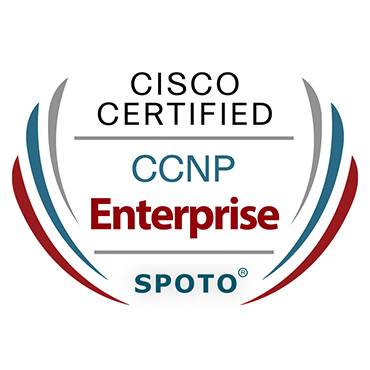
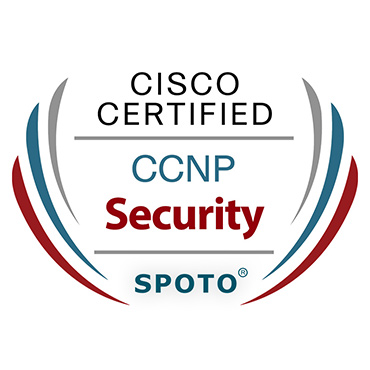

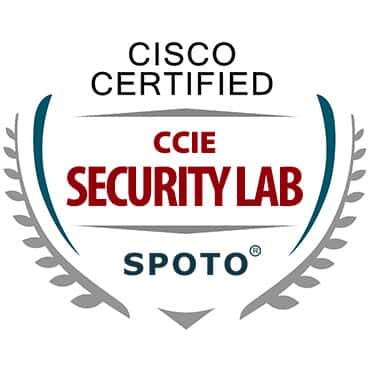
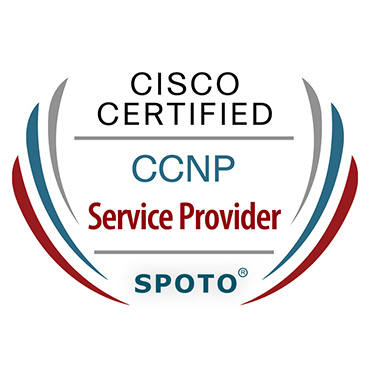

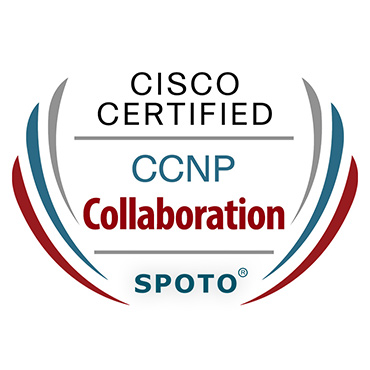
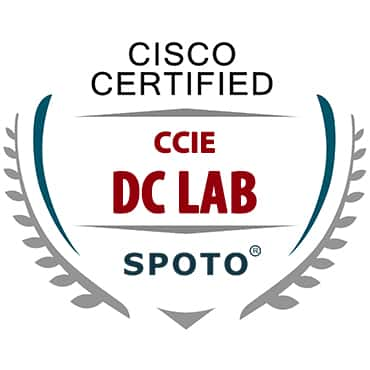


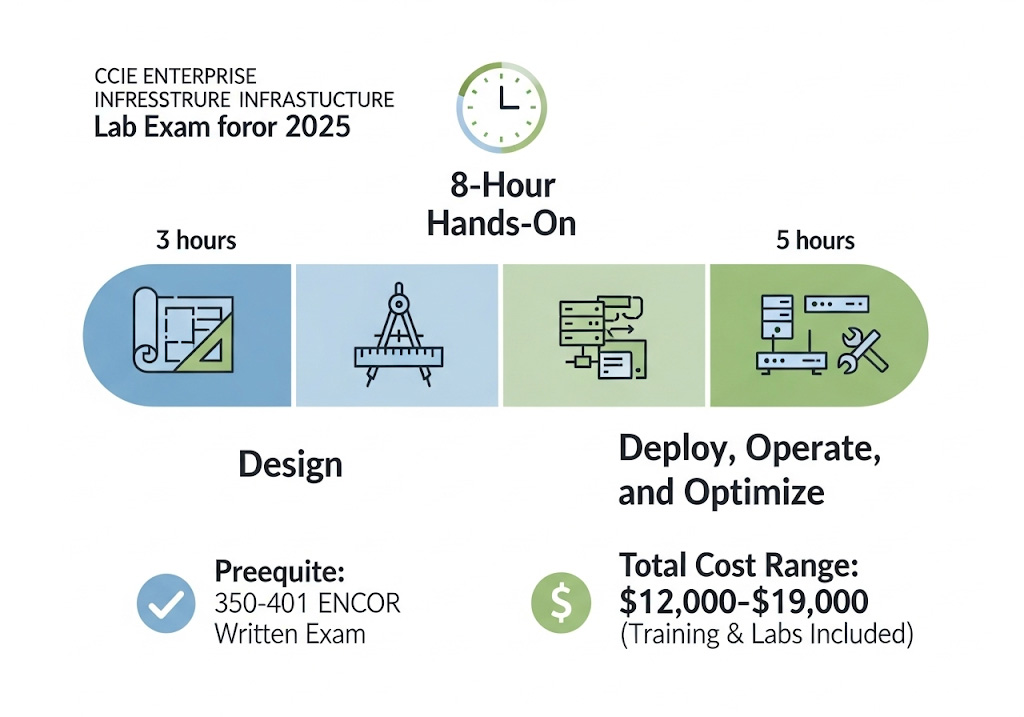
Comments